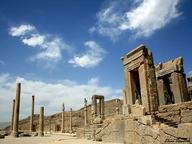Quiz Answer Key and Fun Facts
1. True or false: The Persians came from Aryan stock, and spoke an Indo-European language.
2. Just prior to the birth of the Persian Empire, Zoroaster presented his philosophical ideas and teachings, and the development and spread of the Zoroastrian faith throughout the Persian Empire followed. His teachings were formalized into the sacred book of the Zoroastrian religion, which is called...?
3. The origin of the Persian Empire can be found in a state formed at Parsumash c. 700 B.C. Who was the founder of this Persian state?
4. One of the keys to the building of the Persian Empire was the founding of the Median Kingdom to the north. Which Median king created this kingdom by first defeating the Scythians and then by extending his rule over the Persians to the south?
5. In 559 B.C. the capital of the Persian state was established at which city?
6. In 550 B.C., the son of the founder of the Median Kingdom, Astyages, was ousted from the Median throne by which Persian vassal king?
7. The 'Ten Thousand Immortals' referred to which group of people of the Persian Empire?
8. True or false: Persian rule was, at the outset, tolerant of the native beliefs and customs of its conquered peoples.
9. One of the first great conquests of Persia was that of Lydia, ruled by the famed king Croesus, which finally occurred in 547 by the capture of which capital city?
10. Who was king of Babylon when the Persians conquered it in 539?
Source: Author
thejazzkickazz
This quiz was reviewed by FunTrivia editor
nerthus before going online.
Any errors found in FunTrivia content are routinely corrected through our feedback system.
